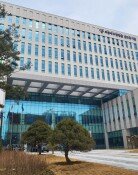Japan Regards China as a Military Threat for the First Time
Japan Regards China as a Military Threat for the First Time
Posted September. 27, 2005 05:56,
A Security and Guarding Plan by Japans Ground Self-Defense Force (GSDF) has been revealed to include a possible Chinese invasion.
During the Cold War era, the plan mostly perceived an invasion by the former Soviet Union as threatening. It is the first time that a Chinese invasion has been confirmed to be included in the plan.
The plan, published by the Asahi Shimbun on Monday, presents a view that North Korea, China, and Russia will be the three nations with the greatest military threat to Japan in order of reference in case of war and sets out preparation measures against them.
This plan is a top secret document that sets up an invasion situation that may occur between the five-year period from 2004 to 2008 and presents the unit operation guidelines for the GSDF. The GSDF staff of officers has prepared specific unit deployment and operation plans every year based on this plan.
The plan writes that the possibility of an attack on Japan by North Korea is existent, by China low, and by Russia very low. The plan predicted that the possibility of a terrorist attack to be low as well. A possible attack by North Korea has already been laid out.
As for the type of Chinese invasion, the plan set out the following situations: an invasion by a brigade on the Senkaku/Diaoyou Islands caused by worsened bilateral relations and disputes over resources in the area surrounding the islands; ballistic missile and fighter plane attack on U.S. forces in Japan bases and Self-Defense Force facilities in case of U.S. intervention supported by Japan in the China-Taiwan dispute resulting from a declaration of independence by Taiwan; and dispatch of guerillas or specially trained forces into Japans urban area.
Japans response to the hypothetical invasions includes relocating the GSDF infantry unit from Kyushu to Okinawa, the GSDF reclaiming the Chinese-invaded area after a Maritime and Air Self-Defense Force attack, and deploying forces to islands in preparation for possible attacks and mobilizing the forces in Kyushu and Sikoku if needed.
As countermeasures to a guerilla attack in the urban area, the plan suggests relocating the Hokkaido forces and running special operation forces to defend major facilities such as U.S. and Self-Defense force bases.
As for attacks from North Korea, which the plan considers more likely than a Chinese invasion, the plan points out a possible attack by ballistic missiles or by about 2,500 armed operators in case of disputes, triggered by an economic sanction resulting from worsened North Korea-U.S. relations.
Meanwhile, the Nihon Keizai Shimbun reported on Monday that, after the ongoing global relocation of U.S. forces is completed, a U.S. Forces Japan UEX will be established in Camp Zama of Kanagawa Prefecture and take charge of U.S. forces operation in case of war on the Korean peninsula.
The UEX will not have actual combating capabilities at time of peace. However, in case of war, the UEX will be organized into brigades and carry out operations. The U.S. forces plan to build 20 UEXs around the world. The U.S. is said to be planning to relocate the First Army Corps Headquarters from the U.S. mainland to Camp Zama and establish a UEX there.
Hun-Joo Cho hanscho@donga.com







